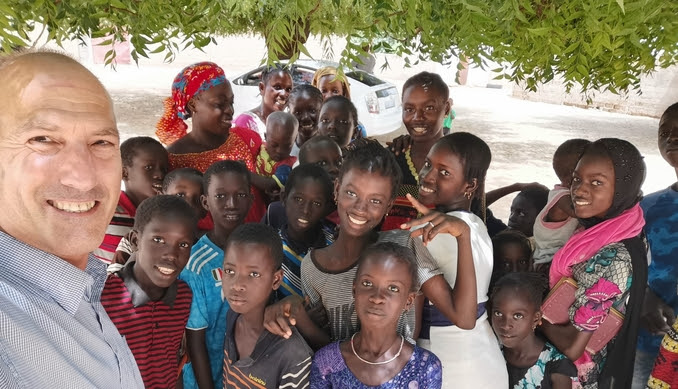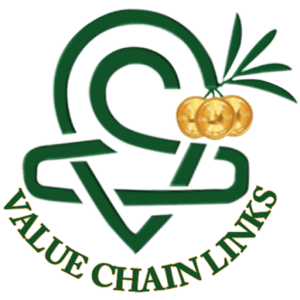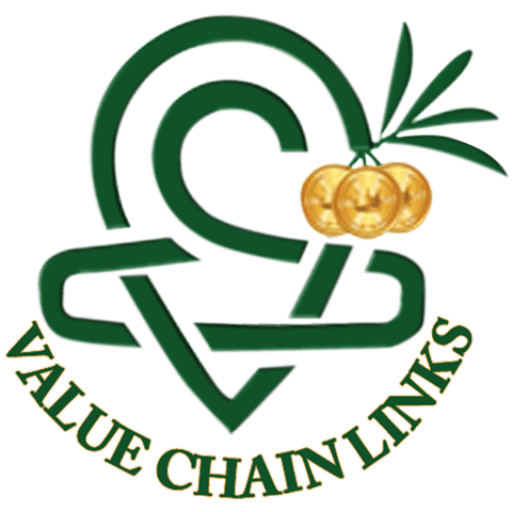HOW WE MEASURE FARMERS’ ECONOMIC SUCCESS, AND HOW WE SHOULD?

BY DR. NIMROD
When I look at the World Bank data about global poverty, the thing that strikes me the most is the massive number of people currently living in poverty; 696 million from less than $ 1.9 per day and 3.27 billion from less than $ 5.5 per day.
The poverty rate in the general population decreases, but as the global population grows, the absolute numbers may increase. For example, from September 2020 to March 2021, an additional 7 million people live in poverty. That is, a million more people every month!
Below is the percentage of people in poverty in the sub-Sahara region.

You will need to change your approach, trust me, and have more patience than usual for this to occur. Particularly, you will have to wait for the mangoes to reach their best (top) EXPORT quality.
If you continue harvesting like before, you will not fully enjoy the potential income that you can get from being protected by Green Valley’s FFCTZ protocol.”

I see these numbers and my heartaches! How can one survive on such a meager income?
Then I think to myself, “Many people are living in poverty. Most of them are farmers living in Africa. But what can I learn from these numbers that can help me and others to help those poor farmers?“
The truth is, not so much!
Be it 1.9 or 5.5 $/ day, from the numbers themselves; it is difficult to learn much beyond the precarious financial situation of the people.
The current measure of poverty as income per day gives us no clue about the reasons or solutions to farmers’ problems.
Is “Poverty” not an effective measurement to improve farmers’ livelihood? And if so, what should we measure?

“PITY” IS NOT A GOAL
The current way of poverty measurement evokes feelings and emotions amongst those who were lucky to be born where poverty is not the daily reality.
Such “emotions” include, Pity, Mercy, Compassion, and Sympathy, which leaders use to increase funds coming from donations, loans, grants, etc., given by those who wish to clean their conscience or advance an agenda.
Donations are a way to “survive” but not a path to “thrive,” and Mercy is not an alternative to a pragmatic plan for a better future.
To change farmers’ reality, we need practical field business-oriented data. However, it seems that such data and information are currently missing.
One should ask, “WHY?”
Maybe because when we focus on Poverty, we only collect relevant data for measuring Poverty. However, if we wish to concentrate on Prosperity, we should aim for a different data set.
HOW IS POVERTY CREATED?
The bottom line is simple – poverty occurs when the family’s total expenses are higher than its total income. It doesn’t mean that any family that is losing money is in poverty.
Poverty is also a result of our “state of mind” and our view and belief of how our future would look. When the family’s income potential is at a “survival” mode, and they believe it is a “permanent” state, the family may degenerate into poverty.
In reality, and from the farmer’s point of view, the “Poverty Equation” contains only two components; Expenses and Income.
To illustrate this, I will focus on a group of people I somewhat got to know better than others, the African smallholder farmers.

EXPENSES
The expenses of an African family engaged in agriculture are usually very low. Typically they have no access to a bank account or legitimate loans. Hence, the level of daily expenditure is limited to their level of daily income.
The African farmer who lives in poverty does not spend his money on luxurious homes, cars, vacations, or fancy meals. Often he has no or limited access to electricity, running water, healthcare, and education.
Do you think that if such a farmer can save something from his 1.9 $/day, say 20%, he will escape poverty?
Therefore, we can conclude that poverty is not the result of too much spending by the farmers and that salvation will not come from “savings,” as there is nothing much to “save” from 1.9 $/day.
INCOME
This may not be surprising, but the African farmer makes his living from farming.
Most African farmers have a small plot of land, which they cultivate. In his land, the farmer raises his crops. Typically, the quality of the produce is low.
The farmer uses part of the produce for self-consumption, and the rest is sold to local buyers for a relatively low price.
With the extra income received from the buyers, the family would purchase necessary essential products and services.
Hence, farmers’ prosperity is directly linked to the surplus (after self-consumption) of produce per hectare that they can sell.
Therefore, when the hectare productivity is low, the farmer will sell little and become more impoverished. In contrast, when the hectare productivity is high, he will sell much and increase his prosperity.
It is very straightforward; we can increase prosperity by increasing farmers’ income per hectare.
Now we should ask two questions:
1. Under the current conditions and business environment, can a smallholder farmer rapidly increase his income?
We get the answer by comparing smallholders’ income ten years ago versus today. The change is minor, and so the answer is a big – NO.
2. Does the smallholder farmer holds the potential to increase his income per hectare by tens, hundreds, or even thousands of percent if he gets the proper professional and business support?
Here the answer is clear and easy big – YES.
Conclusions: the Poverty Equation teaches us that we can’t change much the Expenses carried out by the farmer, for it is already too low. However, the Income part we can change and increase even by hundreds and thousands of percentage.
Unlike the Expenses, which are limited to a few USD, the Income potential increase is nearly unlimited by definition.

THE PRODUCTION UNIT
Hectare is the farmers’ production unit, just like a machine is the production unit of an industrial and a shop for a shopkeeper.
When a shopkeeper wishes to improve his income, he focuses on increasing the productivity of his shop. An industrialist would improve his income by increasing the efficiency of his machine, hence increasing the productivity of his factory, which leads to better revenue.
Similarly, a farmer increases his income by increasing the productivity and efficiency of his field (“factory”), which is measured by hectares (“production unit”).
Knowing the above, you can ask yourself what piece of essential information would help you and the farmer more;
(1) knowing the farmer’s income per day, or
(2) knowing the farmer’s income per hectare.
If I were an engineer who is asked to improve the income of a factory, I would start by asking what the performance of the factory (field) is and each of its machines (hectare).
In agriculture, when we want to improve the farmer’s livelihood through increased income, we should start by studying and understanding the technical and financial performance of his “production unit,” the hectare. Then we need to estimate the potential income of that hectare when adequately managed and define the way to introduce the change.
Hence, when farmers ask for my support, I start the meeting by asking questions about their “production unit,” their field. I never ask them about their financial state.
Maybe it’s time for all of us to focus on farmers’ Production Units, the hectare.

| UNIT OF MEASUREMENTThe unit of measurement and how we define it have far-reaching psychological and practical effects than the number or score that we get or give.Think about yourself; you focus on what you are being measured. Your children concentrate in school on what they are tested, etc.As I shared above, when I meet with farmers, I ask them about their business and “production unit.” I aim to understand their expenses, income, and profitability per hectare.The main challenge I face is the lack of belief by the farmers that they can ever hope to see a better future.As I work a lot with mango growers, we often find that their current income is 500 $ per hectare. I then share with them that an Israeli mango grower can earn 50,000 $ per hectare. At this point, they start believing that they can do better.When I later tell them that their mangoes are just as good as the Israelis, and with some support, they can more than double their income, they gain trust that a better future is just over the corner. From this point and on, whatever we discuss, the baseline is Income per Hectare (IPH). MAKE IT YOUR HABIT TO USE THE TERM INCOME PER HECTARE (IPH)! |
| TAKEAWAY» Farmers’ economic measurement unit – Income (or profit) per hectare. » Prosperity – smallholder farmers’ best real chance to improve their livelihood is by increasing their income per hectare. » Beware – be it Poverty or Prosperity, we focus on what we measure. » A positive Attitude is powerful – let’s use a term that reflects the future we want, Prosperity. » Goal – we wish to improve farmers’ lives, so let’s measure relevant data to facilitate it. |
| Please, if you found value in this article, it would mean a lot to me if you send me a comment and share it with your friends.Subscribe here for access to exclusive content – SUBSCRIBE. |
| *** Mental and Economic Freedom Are Interconnected. *** |

